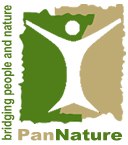A representative from PanNature suggested clearly defining the non-profit status of science and technology organizations to facilitate research, technology transfer, and application. This clarity would also enhance international collaboration and attract funding.

Promoting Other Effective Area-based Conservation Measures (OECMs) in Vietnam
Vietnam is recognized as one of the world’s most biodiverse countries. However, biodiversity conservation in the country faces challenges, one of which is the limited extent of officially designated protected areas. The current coverage remains far below the targets outlined in the National Biodiversity Strategy to 2030, with a Vision to 2050, and the National Biodiversity Conservation Plan for 2021–2030, with a Vision to 2050. Vietnam’s official protected areas account for only 7.96% of terrestrial land and 0.17% of marine areas.
To bridge this gap, Other Effective Area-based Conservation Measures (OECMs) have emerged as a potential solution. OECMs refer to areas outside the formal protected area system that substantially contribute to biodiversity conservation. These areas help fill critical gaps in conservation efforts while recognizing and supporting diverse governance models, including those led by local communities and Indigenous groups. Notably, many OECMs are also Indigenous and Community Conserved Areas (ICCAs) – areas effectively managed by local communities but not yet officially recognized or adequately supported.
From forests protected by local people to wetlands maintained by community efforts, or ecologically significant areas with traditional management practices, these sites all hold the potential to be OECMs. The recognition and integration of OECMs into Vietnam’s conservation strategy would not only expand the country’s protected area coverage but also support local livelihoods, preserve cultural heritage, and strengthen climate resilience.
To further discussions on OECMs in Vietnam, on February 14 & 15, 2025, in Van Ho (Son La province), the People and Nature Reconciliation Center (PanNature) organized a seminar under the theme: “Promoting Other Effective Area-based Conservation Measures (OECMs) to Achieve Biodiversity Conservation Goals in Vietnam by 2030.” The event brought together representatives from government agencies, research institutes, universities, local communities, and conservation organizations.
At the seminar, participants explored key issues, including:
- Vietnam’s policy direction for implementing OECMs to meet the 30×30 target
- OECMs: definitions, criteria, and identification methods
- International experiences in OECM implementation and lessons for Vietnam
- Potential OECM models for primate conservation in Vân H?, Qu?ng Bình, and Qu?ng Nam
The discussions highlighted the urgent need to establish an OECM framework tailored to Vietnam’s context to safeguard biodiversity across terrestrial, marine, and coastal ecosystems. This effort is crucial for realizing the 30×30 global biodiversity conservation commitment that Vietnam has pledged to achieve by 2030.
On the sidelines of the seminar, delegates participated in a field visit to the habitat of the critically endangered white-cheeked black gibbon in Vân H?, S?n La. This is one of the few remaining populations of this highly threatened primate species in Vietnam. The area is currently voluntarily protected by the local community, yet its habitat is increasingly fragmented and shrinking due to deforestation and development pressures. The shrinking forest patches that the rare gibbons rely on underscore the urgent need for forest restoration and greater support for community-led conservation efforts.





The event agenda and presentations were shared during the seminar can be seen HERE (Vietnamese language).



